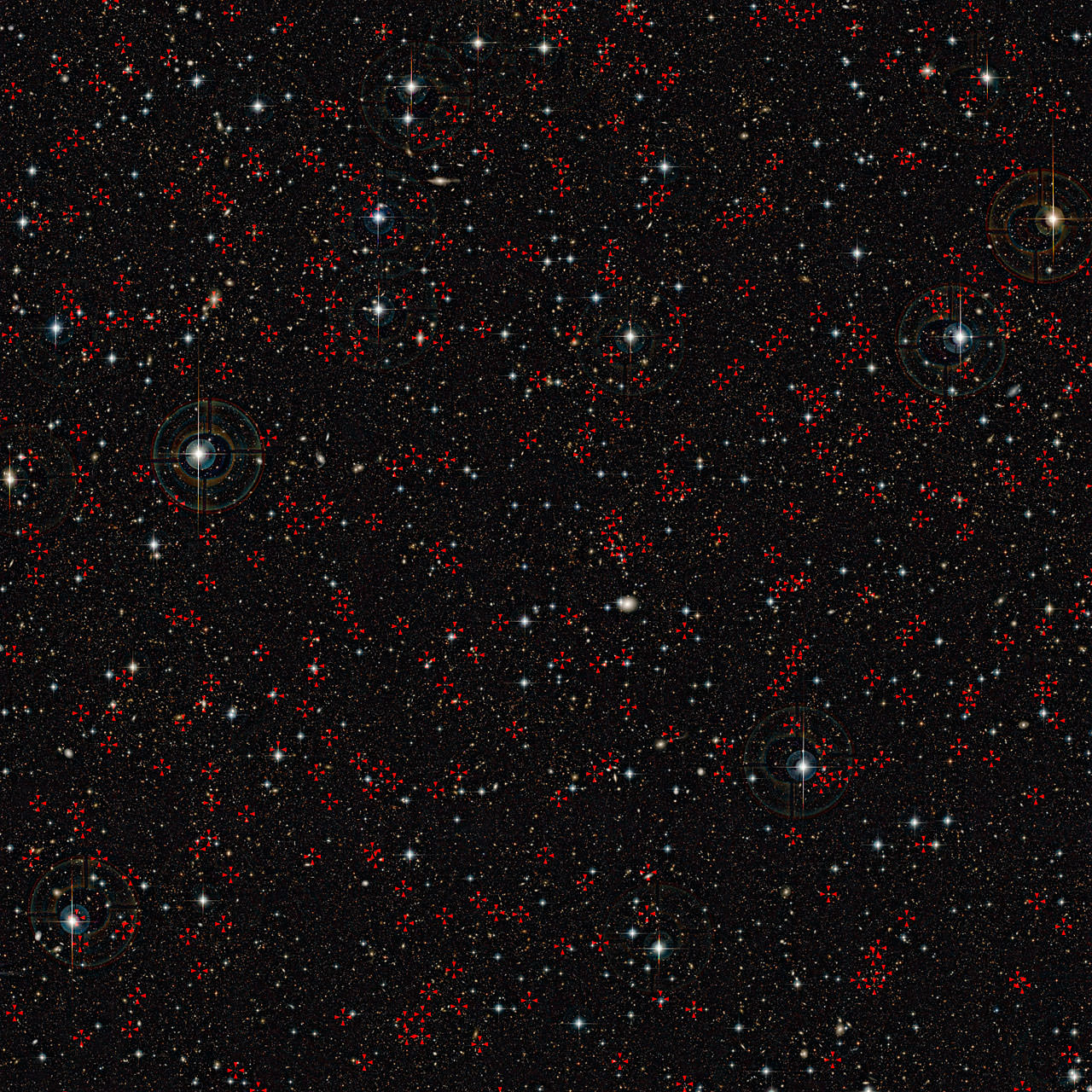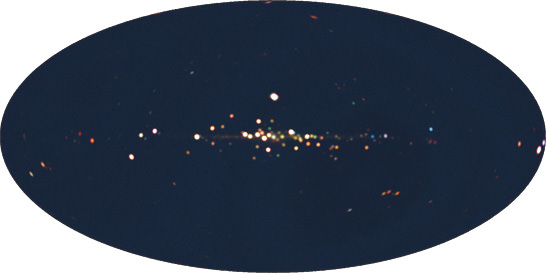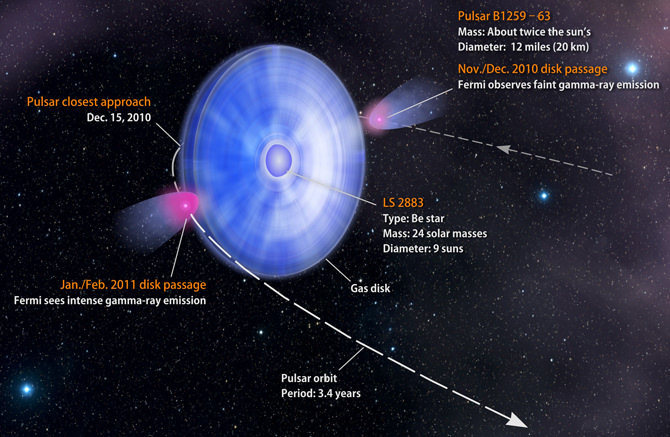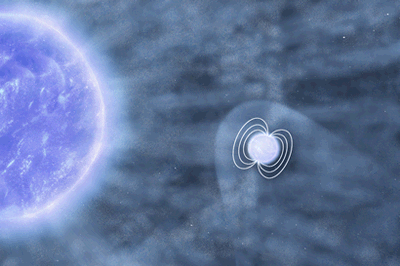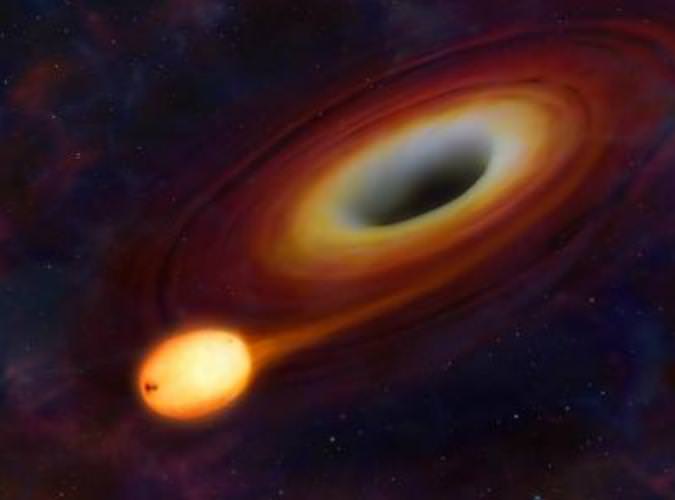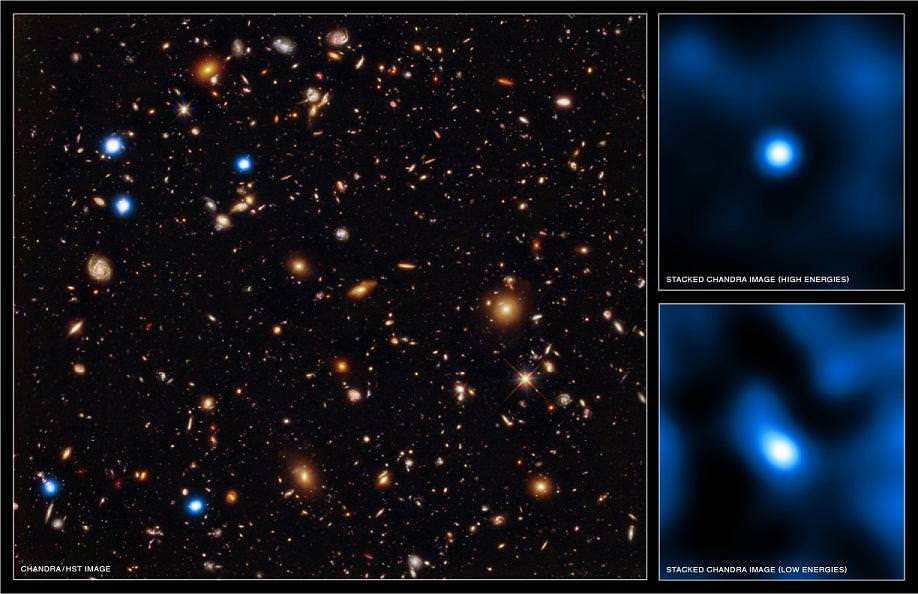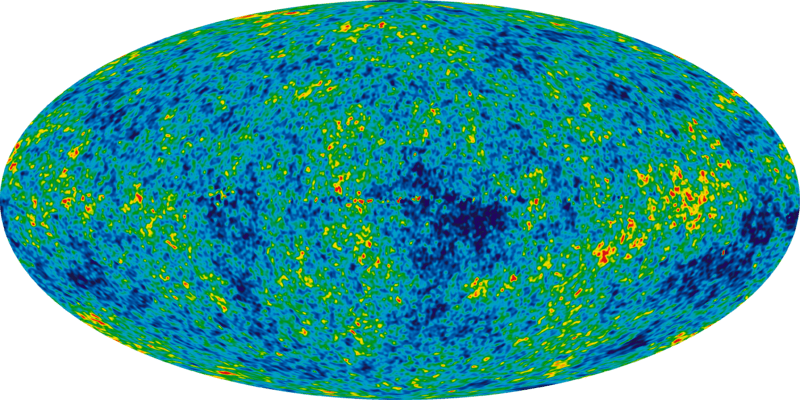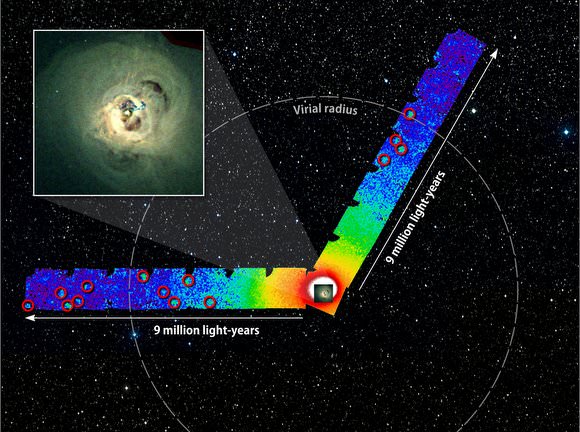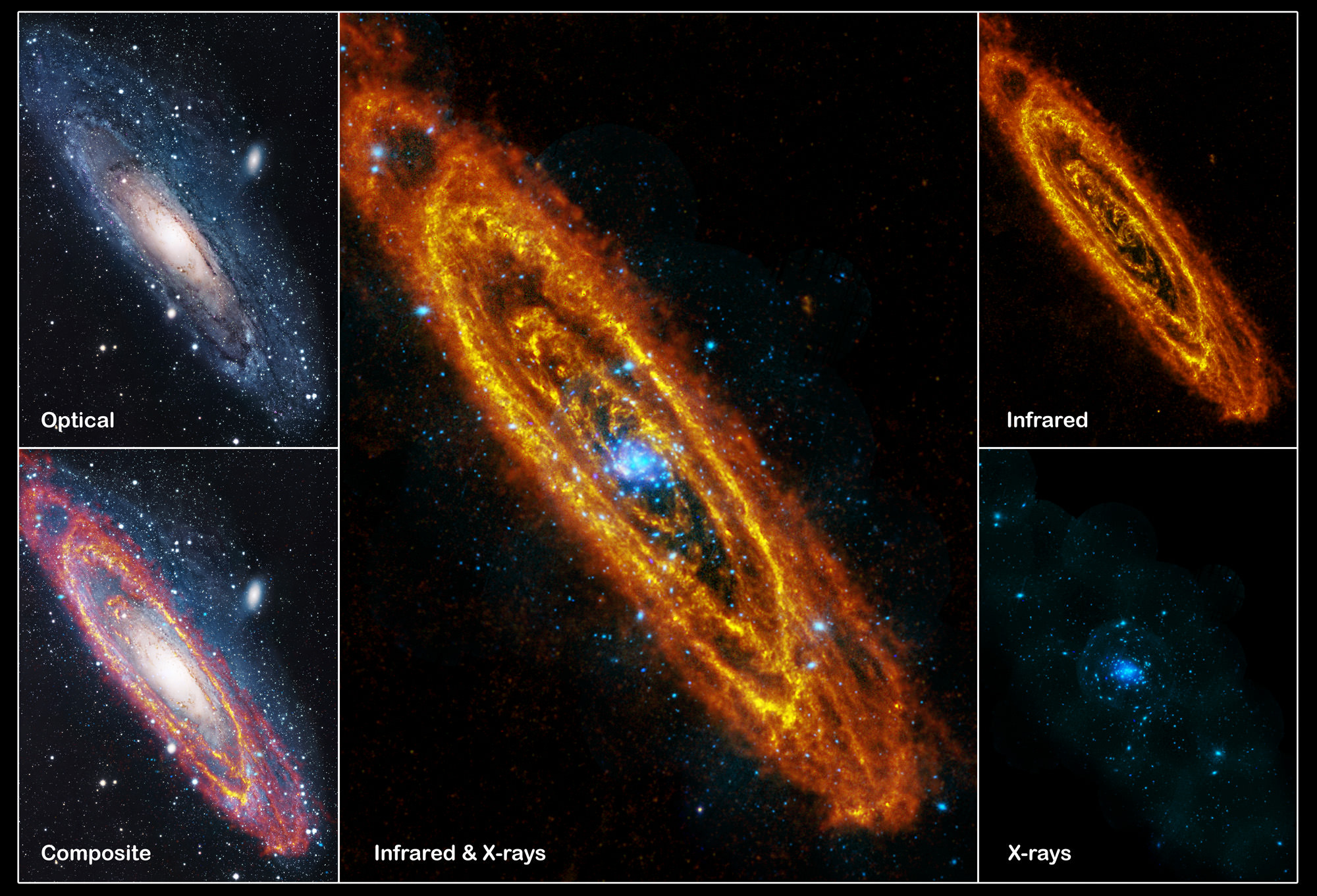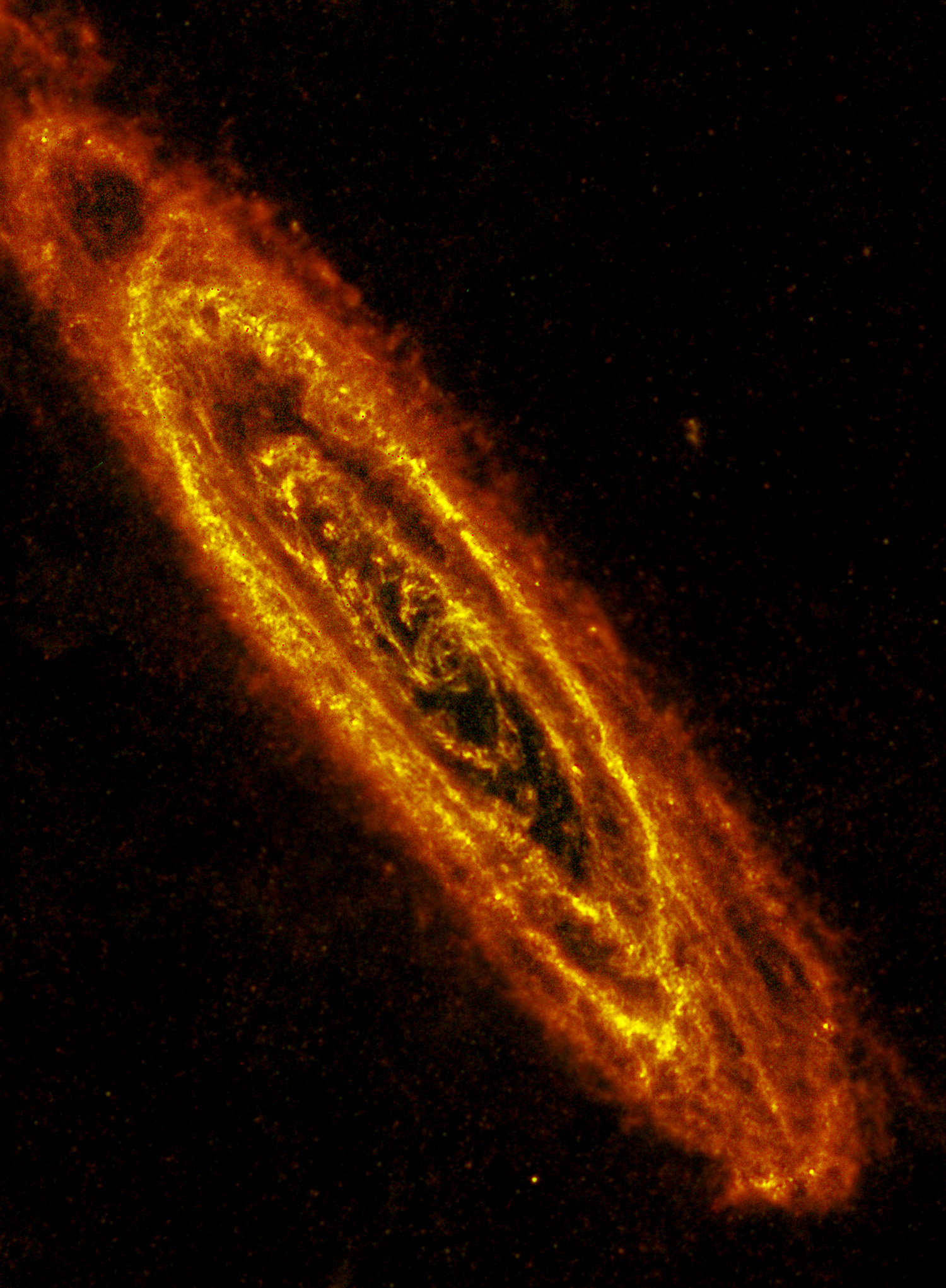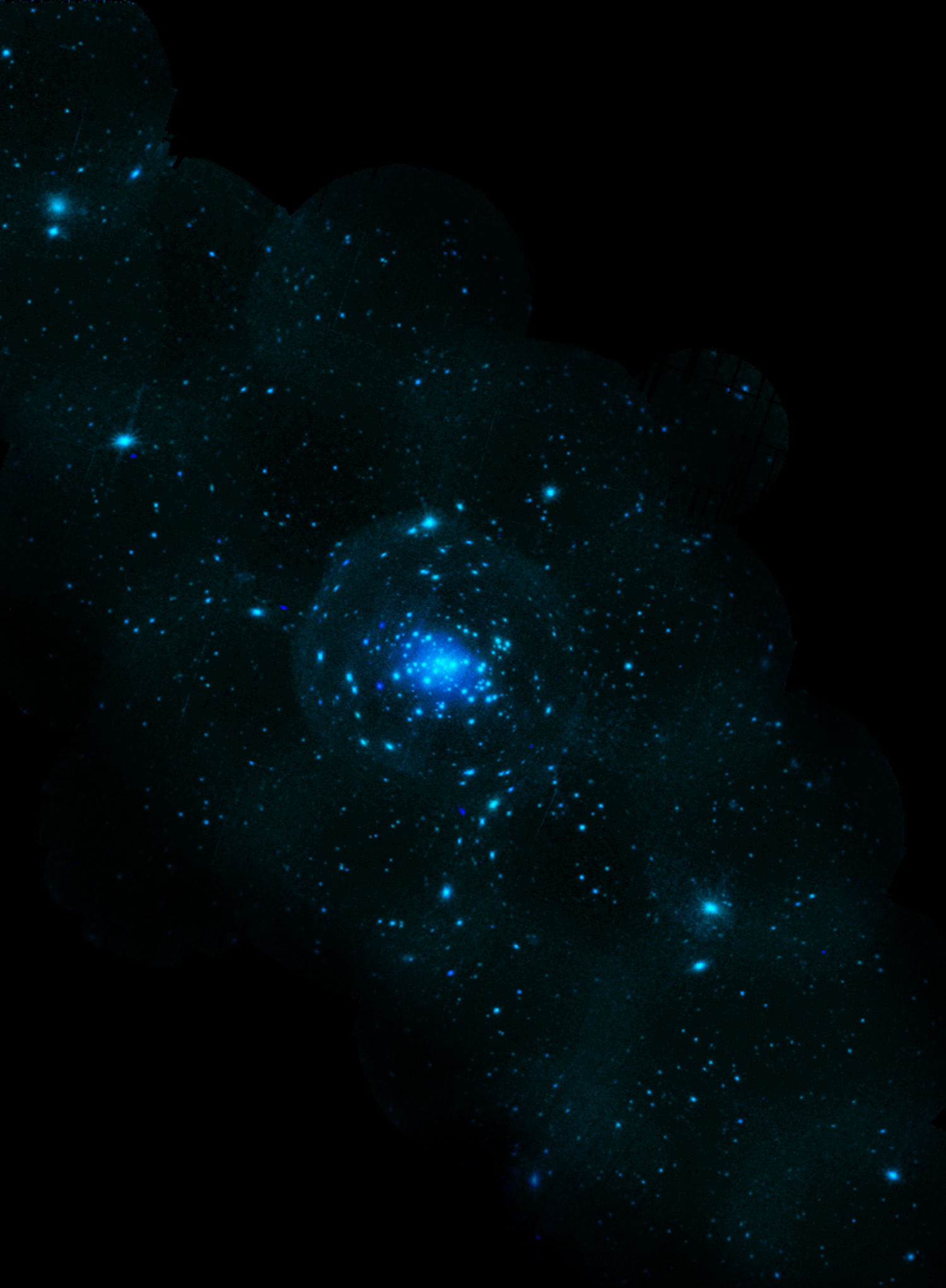[/caption]
ESO’s Very Large Telescope and ESA’s XMM-Newton X-ray Space Observatory has just opened our eyes once again. While we thought that the massive black holes that lurk at the center of large galaxies (and they always lurk, don’t they? they never just lay about, lallygag, or loiter…) for the last 11 billion years were turned on by mergers, we’re finding out it just might not be so.
For all astronomers, we’re aware that galactic structure involves a mostly quiescent central black hole. But as we reach further out into the Universe, we’re finding that early, brighter galaxies have a middle monster – one which appears to be noshing on a material that emits intense radiation. So if a galaxy merger isn’t responsible, then where does the material originate to ignite a quiet black hole into an active galactic nucleus? Maybe the omni-present dark matter…
Viola Allevato (Max-Planck-Institut für Plasmaphysik; Excellence Cluster Universe, Garching, Germany) and an international team of scientists from the COSMOS collaboration have studied 600 active galaxies in an intensively mapped region called the COSMOS field. Spanning an area consisting of about five degrees of celestial real estate in the constellation of Sextans, the COSMOS field has been richly observed by multiple telescopes at multiple wavelengths. This gives astronomers a great “picture” from which to draw data.
What they found was pretty much what they had expected – most of the active galaxies in the past 11 billion years were only moderately bright. But what they weren’t prepared to understand is why the majority of these more common, less bright active galaxies weren’t triggered by mergers. It’s a problematic situation that had previously been tackled by the Hubble Space Telescope, but COSMOS is looking back even further in time and with greater detail – a three-dimensional map showing where the active galaxies reside. “It took more than five years, but we were able to provide one of the largest and most complete inventories of active galaxies in the X-ray sky,” said Marcella Brusa, one of the authors of the study.
These new charts could help further our understanding of distribution as the universe aged and further refine modeling techniques. The new information also points to active galactic nuclei being hosted in large galaxies with abundances of dark matter… against popular theory. “These new results give us a new insight into how supermassive black holes start their meals,” said Viola Allevato, who is lead author on the new paper. “They indicate that black holes are usually fed by processes within the galaxy itself, such as disc instabilities and starbursts, as opposed to galaxy collisions.”
Alexis Finoguenov, who supervised the work, concludes: “Even in the distant past, up to almost 11 billion years ago, galaxy collisions can only account for a small percentage of the moderately bright active galaxies. At that time galaxies were closer together so mergers were expected to be more frequent than in the more recent past, so the new results are all the more surprising.”
Original News Source: ESO Press Release.

